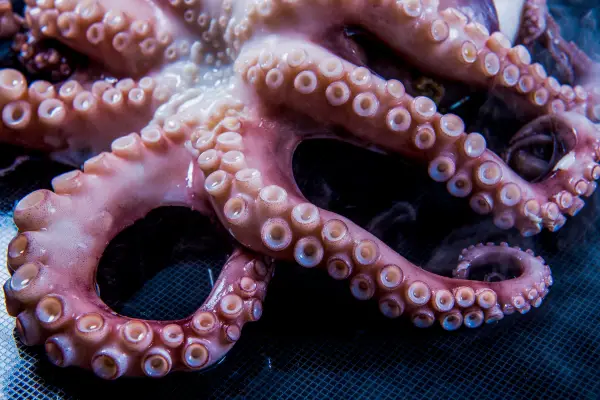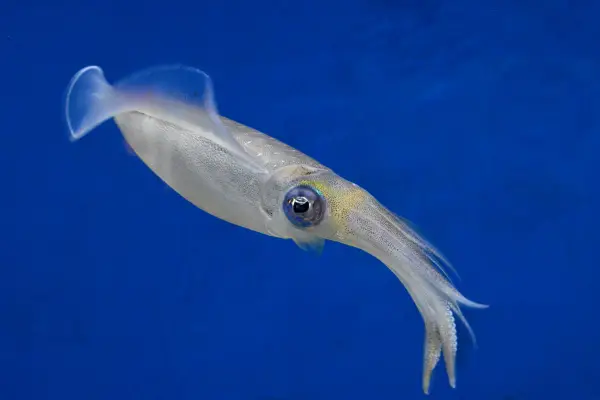The Colossal Squid vs. The Giant Squid
The oceans cover over 70% of the Earth’s surface and hide some of the planet’s largest animals. Lurking in the deep, dark depths are two massive invertebrates locked in a centuries-long battle for the title of world’s largest.
The giant squid and the colossal squid are elusive creatures known more for their legendary size than their confirmed measurements. But which massive mollusk truly deserves the superlative “largest invertebrate ever”?
First Sightings and Early Size Estimates
Stories of enormous squids attacking ships and sailors have dotted folklore and literature for hundreds of years. The Kraken of Nordic legend may have derived from sightings of the giant squid Architeuthis dux.
But the first recorded specimens only began emerging in the 1850s and 1860s, usually appearing after storms or when washed ashore dead.
Early size estimates for giant squid ranged from 16 meters (~52 feet) to over 20 meters (~66 feet), though few complete specimens existed to substantiate these extraordinary claims.
In 2004, marine biologists in New Zealand examined a complete female Architeuthis dux measuring 13 meters (~43 feet) long and weighing ~997 kg (2,200 lbs) . This set the record for the largest scientifically documented giant squid.
The colossal squid (Mesonychoteuthis hamiltoni) was an even greater mystery. It took until 1925 to identify the species from two tentacles found in the stomach of a Norwegian sperm whale. A few more beaks and other small bits and pieces surfaced over the next decades. But it wasn’t until 1981 that an intact adult colossal squid was first photographed near the Falkland Islands.
Early size estimates for colossal squid also topped 16 meters (~52 feet). A partially intact specimen discovered in 2007 in the Ross Sea off Antarctica sparked news reports of a 10 meter (~33 foot) 440 kg (970 lb) colossal squid. But as with Architeuthis, few complete, undamaged specimens existed to conclusively determine the maximum size of this elusive creature.

Current Record Holders for the Largest Complete Specimens
In 2021 researchers in New Zealand examined and froze an intact specimen of Architeuthis dux. The mature female, caught near Antarctica’s South Sandwich Islands, measured 4.65 meters (~15.3 feet) in total body length and weighed ~275 kg (606 lbs). This is the largest complete giant squid on record.
For colossal squid, the largest complete specimen is a mature female Mesonychoteuthis hamiltoni caught in 2007 off the coast of Antarctica. It measured an astonishing 4.95 meters (~16.2 feet) in total body length and weighed ~495 kg (~1,091 lbs).
Based on the largest scientifically documented specimens, the colossal squid takes the title as biggest complete invertebrate on record.
But documentable whole-body sizes don’t tell the whole story…
Estimating Maximum Total Lengths
Giant and colossal squid sightings, as well as sucker and beak sizes found in whale stomachs, indicate both species can grow much larger than the recorded complete specimens.
Marine biologists have developed length/beak size regressions to estimate the total size of squid from beak dimensions. These models suggest giant squid can reach 18 meters (~59 feet) and colossal squid over 20 meters (~66 feet). However, as with all statistical models, their accuracy decreases when extrapolating beyond the data limits.
Thankfully, advances in deep sea exploration technology enabled the first in-situ observations and measurements of a mature Architeuthis dux in its natural habitat in 2012. The giant squid was filmed at a depth of 630 meters (~2,067 feet) off the coast of Japan’s Ogasawara islands. Its total length measured an astonishing 8-9 meters (~26-30 feet).
While no similar direct observations have been possible for free-swimming colossal squid, many scientists believe their maximum size exceeds giant squid. Supporting this theory are things like Mesonychoteuthis possessing the largest squid beaks and suckers ever recorded.
Reaching such tremendous sizes requires huge appetites, which often includes cannibalism of smaller squid. Colossal squid exhibit greater aggression, larger beaks and suckers for attacking immense prey, and dominate Antarctic waters otherwise full of giant squid. This evidence points to M. hamiltoni reaching the larger raw size…but again, conclusive proof remains elusive.

Estimated Maximum Weights
When it comes to mass, many news reports have touted Architeuthis dux reaching up to ~500 kg (~1,100 lbs) and Mesonychoteuthis hamiltoni over ~700 kg (~1,500 lbs). But substantiating these claims is difficult considering their large Mantle cavities filling with water after death.
Measuring complete giant squid specimens and applying weight/length formulas estimate a ~275 kg (~606 lb) 11-meter male as the maximum weight record. For colossal squid, the expanded weight of the raw ~495 kg mature female represents the largest accurately measured mass.
By comparing weights of whales with squid beaks and sucker marks in their stomach contents, scientists estimate adult giant squid reach ~450 kg (~1,000 lbs) and colossal squid ~600 kg (~1,300 lbs). If maximum total lengths approach 20+ meters for Mesonychoteuthis vs under 18 meters for Architeuthis, then colossal squid likely reach greater overall weights.
Tentacle Lengths: Colossal Squid Take the Crown
The mammoth tentacles of giant and colossal squid represent key weapons for attacking fast-moving prey like whales, toothfish, tuna, and even smaller squid. Using suckered tentacle clubs known as dactyl clubs, these squid latch onto victims, drag them to their sharp beak, and shred them with their razer-like radula tongue.
Giant squid possess the longest scientifically measured tentacle belonging to any known squid or cephalopod. In 1857 researchers examining a specimen from Newfoundland recorded a ~9 meter (~30 foot) tentacle length.
But yet again the amazing colossal squid exceeds its giant cousin. In 2009 PhD Student Sonja Heggstad officially recorded a colossal squid tentacle measuring an astonishing ~11 meters (~36 feet) . This represents not just the longest squid tentacle, but the single longest appendage in the entire animal kingdom.
Conclusions
Based on the largest complete specimens, colossal squid currently hold the record as the biggest invertebrate animal ever scientifically documented. Maximum total lengths likely exceed 20 meters (~66 feet) with weights approaching 600kg ( 1,322 pounds). They possess the largest squid beaks and suckers ever measured as well as the longest tentacle of any known animal.
But giant squid still stake valid claims as the longer animal when considering in-situ observations. And their immense size spanning up to 18 meters (~59 feet) and mass reaching ~ 450 kg (~1,000 lbs) cannot be discounted. Plus, contrary to the belligerence of the colossal squid, the peaceful giant squid frequently falls prey to whale attacks rather than instigating them.
The giant squid and colossal squid remain highly elusive creatures challenging to study and directly measure. Until marine biologists can fit them with GPS tags or discover new intact specimens, maximum sizes will rely largely on statistical estimation methods and good fortune finding these beasts washed ashore or in whale stomach contents. Their mystery and legendary proportions endure as a continuing source of imagination, discovery and wonder yet to be revealed from the silent depths of the sea.


